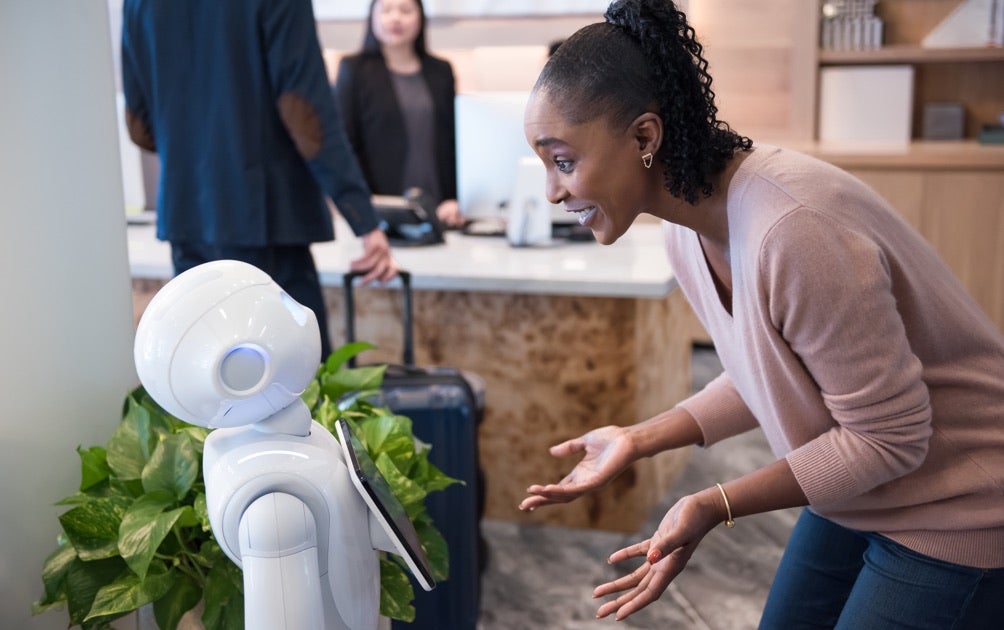
With the number of over-75s set to double from the current level of 5.3 million in the next 40 years, there is no doubt that the UK care system is feeling the strain.
With the immediate funding gap in the social care system estimated at approximately £2.75bn, the current system is struggling to meet demands, and according to a recent report by the King’s Fund, due to the “immense pressure” the UK social care system is under, the situation has moved from urgent to critical.
In response, Damian Green MP has commissioned the first social care green paper, looking at the shortcomings and future challenges faced by the sector.
As well as more conventional means such as an increase in funding, better provisions for retirement housing, and better provisions for age-related conditions such as dementia, a solution to the soaring costs of care may lie with technology. Can tech fix the social care crisis?
Social care technology is on the rise
Until recently, the NHS has been the subject of criticism for its hesitancy in adopting new technology, with NHS hospital trusts across England still owning over 8,000 fax machines.
Although the healthcare sector may be behind sectors such as finance and retail in its adoption of technology, Health Minister Matt Hancock has made integrating technology one of his priorities for the NHS, with one of the aims of the government’s Industrial Strategy to address the challenges of an ageing population through “new demands for technologies, products and services, including new care technologies.”
How well do you really know your competitors?
Access the most comprehensive Company Profiles on the market, powered by GlobalData. Save hours of research. Gain competitive edge.

Thank you!
Your download email will arrive shortly
Not ready to buy yet? Download a free sample
We are confident about the unique quality of our Company Profiles. However, we want you to make the most beneficial decision for your business, so we offer a free sample that you can download by submitting the below form
By GlobalDataDespite a significant funding gap already existing in social care, investment in cutting-edge technology is key to not only improving the quality of care received by those who need it, but also saving money in the long-run. In fact, according to the Taxpayers Alliance, one-tenth of the NHS budget could be saved if more services were automated.
Fortunately, the social care technology sphere is on the rise, with the digital health market expected to reach $379bn by 2024. So it seems is the NHS’ willingness to integrate such technology into the sector, with NHS Digital announcing funding of £4.8m for digital social care programmes earlier this year.
If implemented correctly, technology has the potential to be extremely beneficial to adult social care, streamlining communication between individuals and medical professionals, improve record-management, and enable individuals to receive care at home.
What sort of technology could be utilised?
With an estimated 420,000 additional carers needed to meet demand by 2026, the use of technology to help care for the most vulnerable in society may become a necessity. A fundamental part of this is working to roll out electronic patient records and shared care records across the NHS, but a number of other technologies developed by companies such as Babylon, Touch Surgery, Benevolent AI are also key to delivering better care with the funding available.
In 2017, the NHS launched the beta version of NHS Digital Apps Library, with resources related to first aid, repeat prescriptions, self-monitoring for conditions such as diabetes, heart problems and obesity, as well as text-messaging services.
Personal alarms are already widely used to enable elderly people to live independently, but advancements in IoT technology may mean improvements in remote monitoring. Devices that can measure movement, temperature or heart rate are invaluable for monitoring individuals in between carer visits may become crucial in the future, especially as carer to patient ratio increases. According to The Guardian, Bristol Robotics Laboratory is working on a pair of smart trousers, designed to help people with mobility problems.
According to Age UK, 97% of the population would like to receive care in their own home, and robotics and voice assistants to support people in rehabilitation and remote video messaging for doctors and patients could make this possible.
In 2017, Southend-on-Sea council took this one step further introducing Pepper, a social care robot that can work with older members of the community and improve their memory through memory games.
Machine learning and AI is also valuable in delivering personalised care based on the needs’ of individuals. data-driven technologies can help diagnose diseases or conditions and to gain better insights into treatments, and automated services can give patients reminders to take medication.

What impact could this have?
With a quarter of the population expected to be over 65 by 2050, and with 390,000 staff leaving their jobs each year according to Home Care Insight it is clear that the social care system is now expected to achieve more with fewer resources.
According to Open Access Government, technology is now “advanced, user friendly and cost effective enough to make a real difference”, with some estimates predicting that investing in cutting-edge technology could save the NHS around £10bn by 2020.
Although the use of technology is not a substitute for the emotional as well as medical support of human carers, by automating some aspects, it may be possible to use the benefits of technology to transform the social care ecosystem, enabling carers to utilise their time more efficiently, reducing strain on hospitals and allowing patients to receive care at home.
Health and Social Care Secretary Matt Hancock said:
“Now is the moment to put the failures of the past behind us, and set our sights on the NHS being the most cutting-edge system in the world for the use of technology to improve our health, make our lives easier, and make money go further, harnessing the amazing explosion of innovation that the connection of billions of minds through digital technology has brought to this world.”



